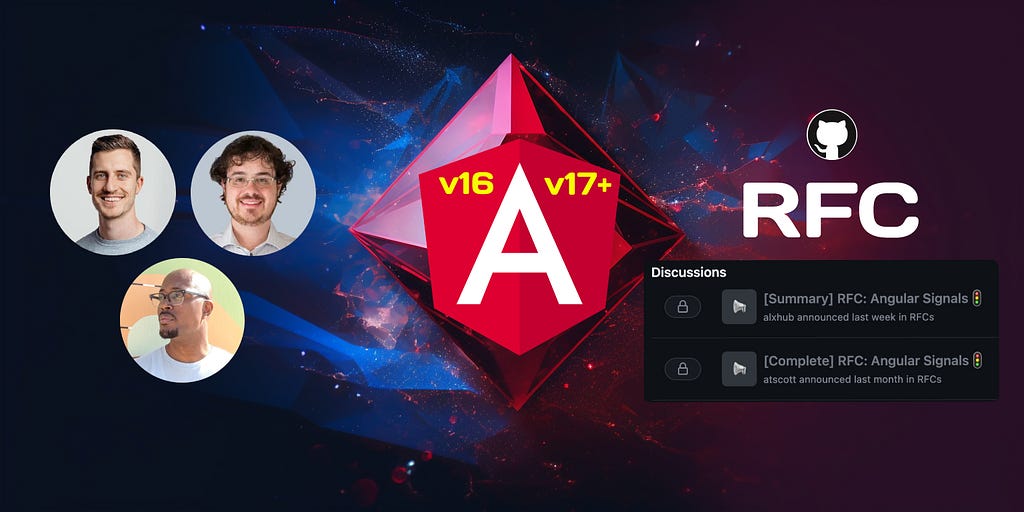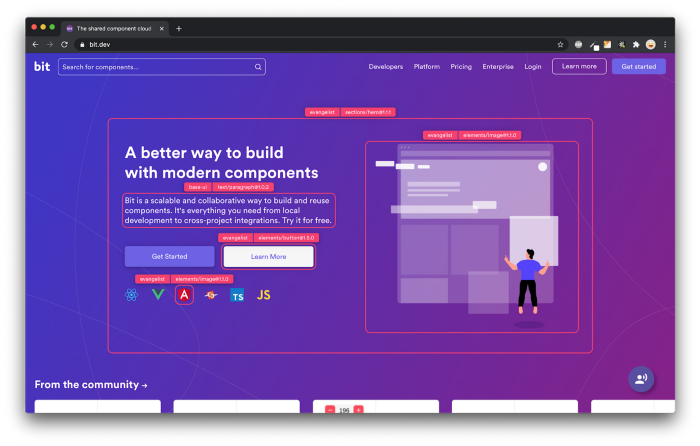This content originally appeared on Bits and Pieces - Medium and was authored by Daniel Glejzner
Find out how you can collaborate with the Angular team.

The official Signals RFC has ended. But do you know what RFC is? Many people don’t!
I recently got involved in the process of releasing a new version of Angular. In the past, I didn’t get involved because I didn’t know much about it. I didn’t follow the process and barely talked with the community. I was missing out!

Signals RFC officially closed
RFC means “Request for Comments”. The Angular Team wants to hear your opinion on the changes they propose. The Signals RFC got a lot of attention with over 1000 comments.
But compared to the millions of Angular developers around the world, this isn’t much. Many of them don’t take part in shaping Angular’s future or talking with the great community. Which is a shame.
The Angular Team really listens to what people say. They’ve made changes based on feedback, and they’re planning to make more.
Example:
- fromSignal and fromObservable renamed to toObservable and toSignal

Voice your concerns and be heard!
Sure, everyone likes a pat on the back, but what the Angular Team values most is constructive criticism. It might be tough to hear, but it’s the best way for them to improve.
Looking at the RFC section can be tough with so many comments and discussions. The technical details are hard enough to understand, let alone keeping up with all the comments.
To help the community understand what’s going on, I started writing articles about recent Sub-RFCs. My goal was to explain things simply but still provide enough information to get people thinking and talking.
- Sub-RFC 4 for Angular Signals sparks interesting discussion started by RxJS author — Ben Lesh
- Signals Sub-RFC 3 — New Angular Reactive Approach or a Path to Confusion?
- Minko Gechev on Angular 16 & 17 — game changer or loss of identity ?

The big summary of concerns
My articles seem to be helping people stay up to date — learn that they can play an active role and talk directly with the Angular Core Team! All it takes is to drop your thoughts in RFC which is located in Discussions section of Angular repo (GitHub).
However, I noticed that many people were still worried about the changes suggested in the RFC. So, I decided to write a summary of all the concerns raised in the comments under the Signals RFC/Sub-RFCs and post it before the deadline.
I have done so without dwelling on technical details as these can change many times.
The main goals were:
- to make sure the Angular Team could easily find this summary for future planning.
- to help community members understand the possible downsides of the upcoming changes - filtered out of the communication noise in the Discussions section under RFC.
With the help of some community members, I managed to do it. You can check it out here: https://github.com/angular/angular/discussions/49685#discussioncomment-5697665

Angular Signals RFC — Closing Summary
Alex Rickabaugh from the Angular Core Team posted a summary. The Angular Team was happy with the active participation and acknowledged some of the concerns raised by community members.
Having this in mind — I also hosted a Twitter Spaces session with Angular experts to discuss the summary. To our surprise, some members of the Angular Core Team joined us and answered our questions!

Angular 16 and Beyond: Bringing The Community Along!
First — Angular Mark Thompson joined and listened to us talking for some time before appearing on the stage. He ensured us that latest changes are not going to leave anybody behind.
Staying Responsible in Angular: Evolving for the Future
After Mark, Alex Rickabaugh joined the conversation to explain more and further assure us that a lot of things have not been decided yet. Angular Team is treating the responsibility for evolving Angular as priority. Final outcome will be influenced by the community.
I recommend replaying the whole space — a lot of valuable info and discussions! https://twitter.com/i/spaces/1lPKqBkRwbbGb?s=20

Results of actions taken
The actions I took brought the community closer together, helped people understand the RFCs, and gave us a chance to talk directly with the Angular Team. This helped calm down many concerned community members and got them excited about the future of Angular. Now they’re planning to get involved in future RFCs to help shape Angular’s future.
What you can do to help along the way?

Pre-RFC Phase
This is where the Angular Team and the community talk about possible new features and improvements.
Actions you can take: Your ideas and feedback are important here.
RFCs Phase
The Angular Team writes formal RFCs to suggest new features or changes. These documents are published on the Angular GitHub repository for review and feedback.
Your Role: This is your chance to give your thoughts on the proposed changes.
Sub-RFCs and Discussions
Based on the feedback, the Angular Team might create more Sub-RFCs to adjust the proposed changes or expand on them.
Actions to take: This involves more discussions and changes.
Final Design and Implementation:
After the RFCs and Sub-RFCs are final, the Angular Team starts making the changes a reality. This includes writing code, testing, and updating documentation.
What you can do: You can help by joining in on the implementation process, raising pull requests, reporting issues, and helping with documentation.
Beta and Release Candidate (RC) Versions
Beta and RC versions of new Angular are released to let developers test new features.
Guess what?: Your job here is to test, test, and test some more!
Final Release
After sorting out the issues found during the Beta and RC phases — Angular Team releases the final new version. But your job doesn’t end here.
Contribute: Even after the final version is out, there’s always more to do — keep an eye out for potential issues and continue to contribute.

So, are you ready to help shape the future of Angular? Let’s do it together!
Upcoming RFCs
- Testing with Signals
- Control Flow
Build Angular Apps with reusable components, just like Lego

Bit’s open-source tool help 250,000+ devs to build apps with components.
Turn any UI, feature, or page into a reusable component — and share it across your applications. It’s easier to collaborate and build faster.
Split apps into components to make app development easier, and enjoy the best experience for the workflows you want:
→ Micro-Frontends
→ Design System
→ Code-Sharing and reuse
→ Monorepo
Learn more:
- Introducing Angular Component Development Environment
- 10 Useful Angular Features You’ve Probably Never Used
- Top 8 Tools for Angular Development in 2023
- Getting Started with a New Angular Project in 2023
- How We Build Micro Frontends
- How to Share Angular Components Between Projects and Apps
- How we Build a Component Design System
- Creating a Developer Website with Bit components
Join the Angular v16/17 Development:— Discover How to Collaborate with the Angular Team! was originally published in Bits and Pieces on Medium, where people are continuing the conversation by highlighting and responding to this story.
This content originally appeared on Bits and Pieces - Medium and was authored by Daniel Glejzner
Daniel Glejzner | Sciencx (2023-05-03T08:44:34+00:00) Join the Angular v16/17 Development:— Discover How to Collaborate with the Angular Team!. Retrieved from https://www.scien.cx/2023/05/03/join-the-angular-v16-17-development-discover-how-to-collaborate-with-the-angular-team/
Please log in to upload a file.
There are no updates yet.
Click the Upload button above to add an update.
